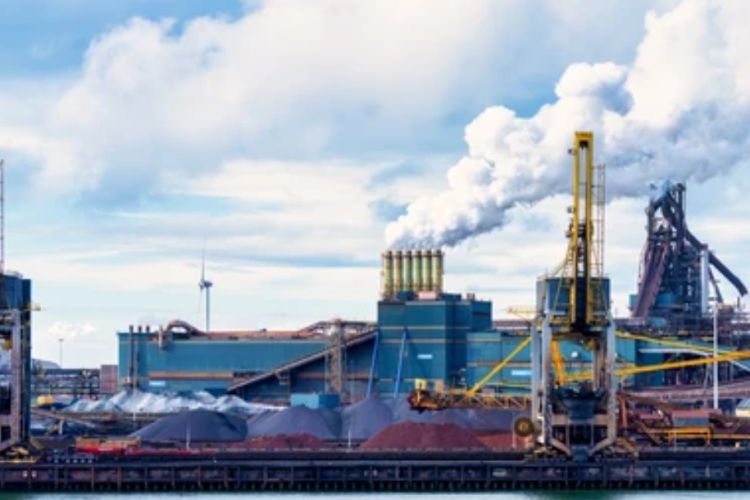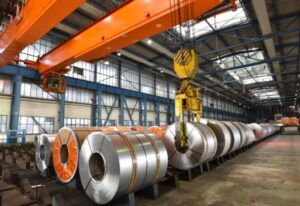
Green steel transition: Heavy-polluting industries can no longer treat emissions as incidental. They must be held directly responsible for their impact on people, climate, and future generations. In the Netherlands, the government has moved decisively against Tata Steel’s IJmuiden plant after emissions from one of Europe’s largest steelmaking facilities were linked to higher lung cancer rates and shorter life expectancy in nearby communities.
Tata Steel Nederland has announced plans to cut emissions at IJmuiden through a €4–6.5 billion project, financed jointly by the company and the Dutch state. The government has pledged up to €2 billion, while Tata Steel has applied for €300 million from the EU Innovation Fund. The company has committed to a 40% cut in carbon dioxide emissions—an effort expected to improve local health outcomes and environmental quality. Final costs will be determined once a climate agreement is signed.
READ | Food safety failures threaten India’s festive season
The global green steel test
Steel, cement, and chemicals together account for nearly 30% of global CO2 emissions. Decarbonising these industries is technically feasible but demands massive capital outlays and long-term commitments to green hydrogen, electrification, and carbon capture. Private companies lack incentive to absorb these costs alone, while governments lack the know-how and risk appetite to execute without private-sector participation.

Public-private partnerships (PPPs) therefore lie at the heart of the transition. The Dutch government’s decision to shoulder nearly a third of Tata Steel’s costs reflects a wider recognition: strategic industries cannot be left behind in the energy transition, or else Europe risks dependence on imports from countries with weaker environmental standards.
The push to clean up the steel industry is inseparable from global climate policy. The Paris Agreement targets and the European Green Deal both place heavy industry under pressure to align with net-zero pathways by mid-century. The European Union has already introduced its Carbon Border Adjustment Mechanism (CBAM), which will tax carbon-intensive imports from 2026. For plants like IJmuiden, the message is clear: adapt or lose access to high-value markets. What is unfolding in the Netherlands is not just a corporate turnaround but part of a larger regulatory wave that will redefine the economics of global steel trade.
Precedents in Europe
The Dutch move is not unique. Germany has extended multi-billion-euro subsidies to ArcelorMittal and Salzgitter for hydrogen-based steel production. In India, green hydrogen missions are pushing industry and government into joint ventures. Japan and Europe are piloting shared research on hydrogen-based processes, reflecting the emerging cross-border dimension of industrial transition.
A harder question concerns the economics of “green steel.” Hydrogen-based production and carbon capture remain costly, making low-emission steel significantly more expensive than conventional steel made with coal. This raises doubts about competitiveness in global markets where Chinese steel continues to dominate on price. Unless governments extend carbon tariffs or demand-side support—such as requiring automakers and construction firms to use low-carbon steel—the transition risks pricing producers out of the market. Consumers, too, may eventually face higher costs for cars, housing, and appliances if green steel premiums are passed down the value chain.
Cross-border PPPs offer promise, as advanced economies hold the patents for low-carbon technologies while emerging economies host future industrial growth. If licensing, knowledge-sharing, and joint R&D are agreed upon, the pathway to decarbonisation will become smoother.
But the pitfalls are equally serious. Corporates may lean too heavily on taxpayer funds, with critics already questioning if Dutch subsidies are underwriting obligations that should rest with Tata Steel. Governments must therefore tie financial support to binding decarbonisation milestones, transparent disclosures, and claw-back clauses if targets are missed.
Regulatory standards and trade
Another risk lies in regulatory divergence. If the EU establishes certification standards for low-carbon steel, these must be recognised by partners in Asia and North America to avoid trade barriers. Without convergence, green steel may struggle to compete globally, undercutting its strategic role.
Despite being one of the Netherlands’ largest employers, Tata Steel’s IJmuiden plant has faced fierce criticism for worsening local health outcomes. To restore trust, emissions data should be verified by independent third parties, not just corporate reporting. Communities must be given a voice in transition plans, with clear mechanisms for grievance redressal.
Decarbonising heavy industry is not only a corporate responsibility or a government project. It is a geopolitical and socio-economic challenge. The IJmuiden plant may be Dutch, but it is owned by an Indian company, supported by European taxpayers, and its competitiveness shaped by global trade flows. No single nation can carry this transition alone.
Done right, cross-border PPPs can be engines of innovation and climate solidarity. Done wrong, they risk entrenching inequality and locking in high-carbon assets. The steel industry, once called the backbone of industrialisation, now sits at the heart of decarbonisation. The choices governments and companies make today will determine who bears the costs and who controls the future of green industry.
